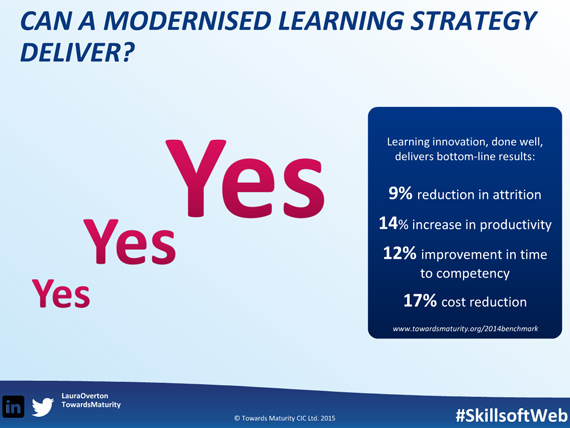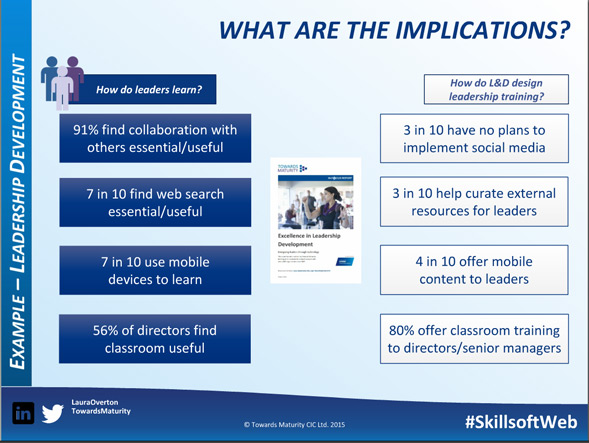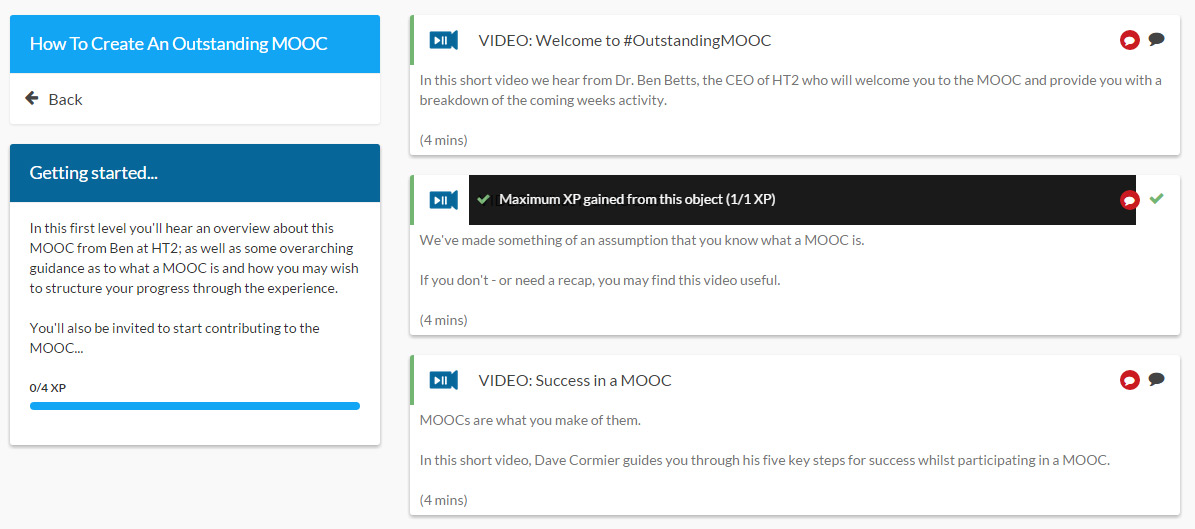I’ve dipped in and out of the “How to Create an Outstanding MOOC” online course today and am enjoying and learning from the content and interactions so far. Don’t worry, I probably won’t blog after every time I’ve jumped into the contents, but I think the first effort gives some of the freshest thinking:
The word “MOOC”
It’s an interesting issue. MOOCs that Universities put together that really were massive and open, with hundreds of thousands joining and participating on whatever content as put together and publicly available, is the right use of the word. Is it the right use when looking at an internal population within a company that you want to get learning more of whatever is appropriate?
I had a conversation with Con Sotidis today that went a bit like this:
Con: Hey, you wrote a blog on MOOCs. Why???
Me: Because I’m attending a MOOC and am learning out loud I guss.
Con: Are you a fan or was it a favour?
Me: Generally a fan. Right tool for the job and all that. Are you not?
Con: Sceptic! Because it’s just another fad. I have been MOOCing for the last 10 years, but I called it a learning package.
It’s all just learning!
Are we just looking at good learning here? Yes I think so. It’s using maybe specific platforms, such as the Curatr platform, but, ultimately, it’s about getting good content to the right people when they need it. Unfortunately, not every L&D professional, team or leader knows this or does it.
Today I also attended a webinar with Laura Overton from Towards Maturity, who research about best practice in learning and share what the impact is. There were a number of key points I tweeted about on the #OutstandingMOOC Twitter hashtag as I thought that they had relevance to the discussion and my own thoughts about just doing great learning.
An initial point is that learning innovation, of which I will include a MOOC, has great benefits to an organisation:
With this in mind, the key point on this next slide was shocking – that “3 in 10 [L&D leaders] have no plans to implement social media”. Yet at the same time these leaders are acknowledging that they find collaboration, the web and mobile incredibly useful and the classroom less so. So why are they still shoe horning people into ineffective ways of learning?
Modern learning innovations
One of the pieces of reading today was from a MOOC blog post by Don Clark. A particular thing he pointed out resonated with me:
“A course demands completion, content, even structured content, does not.
Take your time, dabble if you want, go as far as you want.
The course is an institutional artefact. Keep them in institutions but don’t foist them and their constructs on the web or the rest of us.”
What I love about this, and a comment Don made in a video in the course, is not to concentrate on the drop out with MOOCs, but on the drop in. The fact that people were interested enough to focus on developing their skills, behaviour or knowledge is awesome and should be celebrated.
The Curatr platform
Lastly a few notes on how I’ve used the platform today.
I got an email notification when someone responded to one of my comments. This was great, there was a link to take me straight to that conversation so I could reply if I wanted. However there wasn’t a way, once inside the course, to see these notifications. Being used to Twitter, Facebook and LinkedIn notifications, I really felt that this was lacking. It meant that when I was online in the course there wasn’t a free flow of conversation that could build up and get quite exciting.
As you might imagine, there’s a lot of great curated content in the course, as that is one of the core princeples. However it isn’t possible to see a URL link of the original. Now we are seeing the original content as Curatr uses iFrames to basically give you a magic tunnel to the content, but still have the Curatr platform so that you can see comments and so on. However this isn’t useful if you want to share the content with someone outside of the platform or, as I did today, reference it in an external blog post.
Both of these issues I’ve mentioned to Craig Taylor and they’ve been put on a development roadmap to be considered.
Part of today I was using my iPad to access the content. This experience was much better than the first MOOC I did with Curatr, it was much smoother. However I do still find some things a little “clunky” or challenging to use. I wanted to put a comment on a video, but couldn’t see how to do it. Once back on the computer, clicking the speech bubble gave me access to the content and the comments. However on the iPad it was a little more tricky to understand and press another icon to get the content out of the way and focus on the comments.
The other challenge was perhaps one more of general design than use of the iPad. In the opening pieces of content there was a video which made a great point I wanted to comment upon within the community, but I couldn’t. There wasn’t an option to comment on that specific piece of material – in the screen grab above you can see the green tick rather than the option of the speech bubble. I might well have got the most experience points (“XP”) possible from watching that piece of content, however it didn’t stop me wanting to have a conversation about it. I guess this is a key point about any learning, as well as designing the MOOC and specifically the Curatr platform – you just don’t know what is going to capture someone’s attention and imagination.
QUICK UPDATE
I’ve scored through the comment above, as, upon closer inspection, I can comment on that piece of video. The issue here is one of usability in the detail of the icons. It’s confusing as sometimes there is a speech bubble, sometimes there isn’t, then on the iPad the icons are small and confusing too. Once you know, it’s ok, but it’s getting past that first hurdle. Luckily Curatr are great at receiving feedback, so I’m doing to document my screen grabs and send them off!




